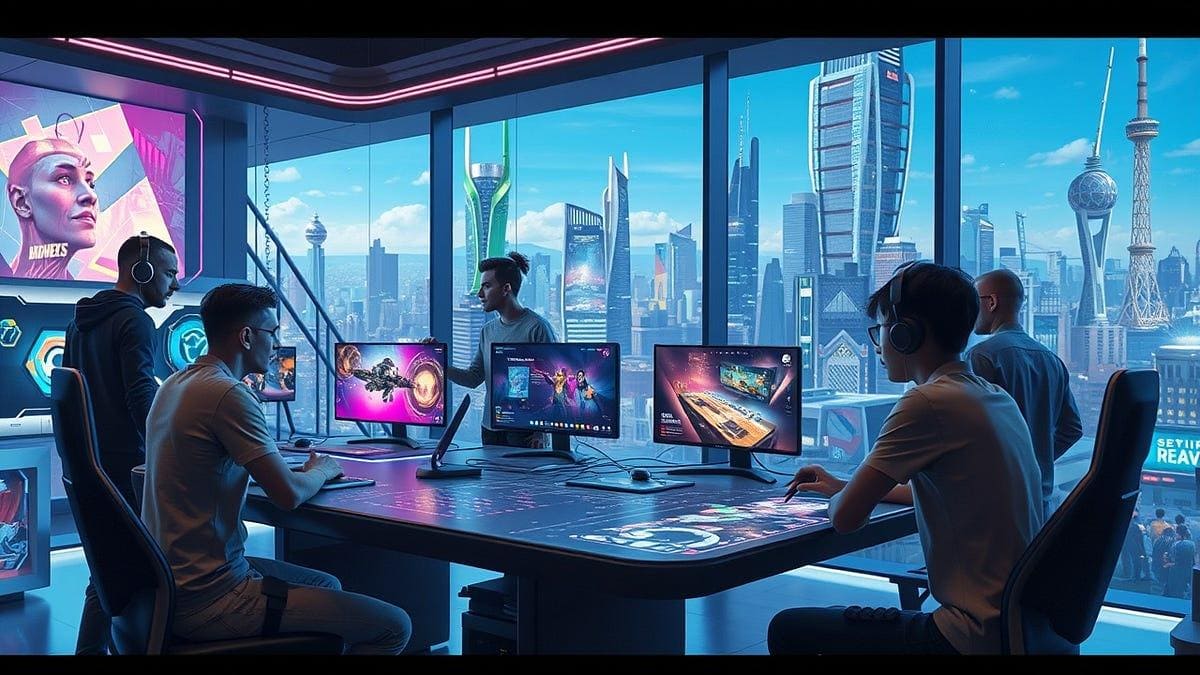Beyond the Screen: How Visual Design Elevates Game Worlds
In the vibrant realm of interactive entertainment, the allure of a game extends far beyond its core mechanics or intricate narratives. Before a player even grasps the controls or delves into the lore, it is the visual design that first captures the imagination, laying the foundational canvas upon which all other elements are built. This initial aesthetic encounter is not merely superficial; it is the gateway to immersion, setting the tone and expectations for the entire journey that awaits.
A compelling visual presentation is instrumental in forging an immediate connection with the audience. It dictates the atmosphere, from the serene tranquility of an alien forest to the gritty tension of a futuristic metropolis. Every color choice, every texture, and every silhouette contributes to a cohesive artistic vision, guiding the player's perception and influencing their emotional response long before any dialogue is uttered or objective is presented. This intricate tapestry of visual elements is what transforms a simple concept into a believable, living world.
Beyond initial impressions, sophisticated visual design profoundly impacts player immersion. When environments are meticulously crafted, characters are imbued with distinct personalities through their appearance, and interfaces are intuitively designed, the barrier between the player and the game world diminishes. This seamless integration allows players to suspend disbelief more readily, fostering a deeper sense of presence and belonging within the digital landscape. It’s about creating a universe that feels tangible and authentic.
In today's highly competitive landscape, a unique and memorable visual identity is paramount for differentiation. Games with distinct art styles often stand out, becoming instantly recognizable and fostering a loyal community. This artistic signature is not just about graphical fidelity; it's about a unique interpretation of reality or fantasy that resonates with players, making a title unforgettable. It elevates a game from a mere product to a cultural touchstone, shaping its legacy.
The profound influence of visual design on the overall game experience cannot be overstated. It is the silent storyteller, the architect of atmosphere, and the primary driver of emotional engagement. Understanding how these visual components coalesce to create rich, expansive game worlds is key to appreciating the artistry and technical prowess involved in modern interactive experiences. Let's explore the specific ways visual design truly elevates these digital realms.
🌍 World-Building Through Art Direction
- Art direction serves as the foundational blueprint for an entire game world, meticulously defining its visual language and narrative essence. It encompasses everything from the grand architectural styles of ancient civilizations to the intricate patterns on a forgotten artifact. A consistent and thoughtful art direction ensures that every visual element, no matter how small, contributes to a unified aesthetic, reinforcing the game's lore, historical context, and overarching atmosphere. This cohesive approach allows players to intuitively understand the world's rules and history simply by observing their surroundings, transforming passive viewing into an active discovery process.
- Consider how color palettes can evoke specific moods: warm, earthy tones might suggest a pastoral, peaceful setting, while stark blues and greys could hint at a desolate, post-apocalyptic future. Lighting, too, plays a critical role, shaping player perception and guiding attention. A beam of sunlight filtering through dense foliage can create a sense of wonder, while flickering shadows in a dark corridor build suspense. Through these deliberate choices, art direction crafts a compelling sense of place, making each environment feel unique and memorable, contributing significantly to the game's identity and player connection. It's about more than just looking good; it's about telling a story without words.
🎭 Character and UI/UX Design for Engagement
- Character design is crucial for forging emotional bonds between players and the digital inhabitants of a game world. A well-designed character conveys personality, backstory, and role through visual cues alone—be it through their attire, posture, or facial expressions. This visual storytelling helps players empathize with protagonists, understand antagonists, and recognize allies. Equally vital is the design of the User Interface (UI) and User Experience (UX). An intuitive UI reduces cognitive load, allowing players to focus on the game itself rather than struggling with menus or controls. Clear iconography, logical layouts, and responsive feedback are paramount for a seamless and enjoyable interaction, ensuring that the interface enhances rather than detracts from the immersion.
✨ Technical Artistry and Performance
- The magic of visual design is often underpinned by sophisticated technical artistry. This involves the intricate process of translating artistic concepts into high-fidelity in-game assets, optimizing them for performance without compromising aesthetic integrity. Advanced rendering techniques, realistic lighting models, and dynamic special effects all contribute to a visually stunning experience. However, the true challenge lies in balancing these ambitious visual aspirations with efficient resource management. TriNimbusopho understands that a breathtaking visual presentation is only truly impactful when delivered alongside smooth frame rates and minimal latency, ensuring that the player's journey through these elevated worlds remains fluid and uninterrupted. It’s a delicate synergy between creative vision and technical execution.
Visual design is an indispensable pillar in creating captivating game worlds. It transcends mere aesthetics, acting as a powerful narrative tool that shapes perception and evokes emotion. Every visual decision contributes to the depth and resonance of the player's journey, transforming digital spaces into unforgettable experiences.
The thoughtful integration of art direction, character design, and technical artistry elevates a game beyond its interactive elements. This fosters a profound connection, enabling players to truly inhabit and explore meticulously crafted universes. Games are not just played, but truly felt and remembered.
As interactive entertainment evolves, the significance of visual artistry will only grow. It is the silent language that speaks volumes, creating distinct identities and enriching every moment of gameplay. TriNimbusopho remains dedicated to pushing the boundaries of visual innovation, defining extraordinary game worlds.


Faisal Atiqah
Diyana Daud
Aniqah Hanafi
Danial Hidayah